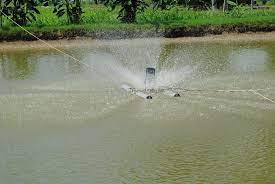08055999218
Water management in catfish farming for good results in 2024

Water Management in Catfish Farming for good results in 2024.
Water management is crucial for successful catfish farming. Catfish are a popular species in aquaculture, and maintaining good water quality is essential for their growth and health. Here are some key considerations for water management in catfish farming:
1. Water Source Selection: Choose a clean and reliable water source that meets the specific requirements of catfish. Avoid water sources with high levels of pollutants, heavy metals, or harmful chemicals that can negatively impact catfish health.
2. Water Quality Parameters: Monitor and maintain optimal water quality parameters for catfish. Key parameters include temperature, dissolved oxygen (DO), pH, ammonia, nitrite, and nitrate levels. Catfish prefer water temperatures between 28°C to 32°C and require adequate dissolved oxygen levels (4-6 mg/L). Regularly test water quality and make necessary adjustments to maintain optimal conditions.
3. Aeration and Oxygenation: Provide sufficient aeration and oxygenation in the water. Catfish require well-oxygenated water to thrive. Use aeration devices such as diffusers, paddlewheels, or air stones to increase oxygen levels in the water. Ensure proper mixing and circulation of water to distribute oxygen evenly throughout the fish tanks or ponds.
4. Filtration and Water Treatment: Implement effective filtration systems to remove solid waste, debris, and excess organic matter from the water. Mechanical filters, settling tanks, and biofilters can help maintain water clarity and prevent the accumulation of harmful substances. Consider using water treatment methods such as UV sterilization or chlorination to control pathogens and maintain water quality.
5. Water Exchange and Flow: Proper water exchange and flow rates are important for waste removal and maintaining water quality. Determine the appropriate water exchange rate based on the stocking density, feed input, and waste production. Implement water circulation systems, such as pumps and water recirculation systems, to maintain a consistent flow and prevent stagnant areas.
6. Stocking Density Management: Avoid overstocking the fish tanks or ponds as it can lead to poor water quality, increased stress, and disease outbreaks. Follow recommended stocking densities for catfish and regularly monitor fish behavior and growth rates to ensure optimal conditions.
7. Feed Management: Implement a proper feeding strategy to minimize waste and optimize feed utilization. Overfeeding can lead to excess nutrient accumulation, water pollution, and poor fish health. Provide a balanced diet and feed the catfish according to their nutritional requirements. Remove any uneaten feed to maintain water quality.
8. Disease Prevention and Biosecurity: Practice good biosecurity measures to prevent the introduction and spread of diseases. Quarantine new fish, monitor for signs of illness, and practice strict hygiene protocols. Regularly inspect and clean equipment to prevent cross-contamination. Implement vaccination and medication protocols as recommended by aquaculture experts.
9. Regular Monitoring and Record-Keeping: Continuously monitor water quality parameters, fish behavior, growth rates, and feed conversion ratios. Maintain detailed records of water quality tests, feed inputs, stocking densities, and any management interventions. This data can help identify trends, troubleshoot issues, and optimize catfish farming practices.
In Conclusion, by implementing these water management in catfish farming practices, catfish farmers can create and maintain optimal conditions for catfish growth, health, and overall farm productivity. It is advisable to seek guidance from local aquaculture experts, follow relevant regulations, and stay updated on best management practices specific to catfish farming in your region.
Do you want to learn more about fish farming? Read more on our Fishery Academy page
Follow us on our social media handles: Facebook, Twitter, Instagram and TikTok
